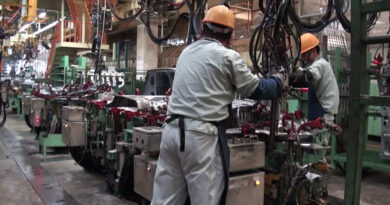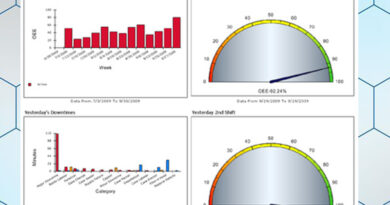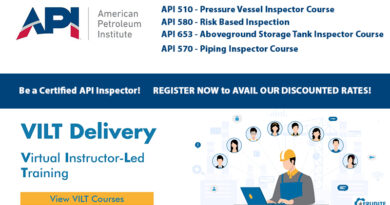Asset management leverages lean
The possibility of achieving zero downtime increases by using lean manufacturing principles in conjunction with technologies that automate the management of assets, service and equipment performance.
Enterprise asset management (EAM) systems maximize the availability of and service performed on the physical or capital assets on which lean manufacturers depend. These tools help deter downtime of equipment and processes while at the same time managing the risk, safety and compliance issues inherent in managing those assets.
But technology alone isn’t a remedy. Plant maintenance departments need to put programs in place to improve the reliability of critical assets. They must master the core competencies related to each asset and establish frameworks for making decisions in relation to achieving lean objectives.
Lean + Asset Health
Consider the case of Toyota. The car company became the world’s most prominent super-manufacturer due largely to a fanatical drive to achieve a “zero-breakdown regime” on production lines. It did this by fusing technologies with programs that focused on equipment performance and proactive asset management.
Lean thinking is about the removal of waste. Waste is any activity or process that consumes resources but doesn’t create value, such as manufacturing products with non-conformities or defects. Lean principles eliminate waste by reorganizing the plant into lines, or value streams, where work cells and assets perform certain tasks. This approach removes non-value-adding activities from the system, leading to more efficient processes.

Graph 1. This chart shows how strategic asset management
unlocks asset performance and raises achievements.
Toyota married this value stream approach with a single-minded focus on improving equipment performance to achieve its zero-breakdown mind-set. Toyota’s competitors didn’t and instead continue to waste money on costly equipment upgrades and lost production time. (“Lean Six Sigma” author Michael George estimates that as much as 50 percent of the investment in new capital equipment is made to compensate for the under-performance of existing equipment due to low overall equipment effectiveness [OEE]).
With the help of enterprise asset management systems, manufacturers can deploy lean techniques such as Total Productive Maintenance (TPM) or Reliability-Centered Maintenance (RCM) to increase asset reliability; just-in-time (JIT) or vendor-managed inventories (VMI) to manage their parts and indirect materials supplies; and activity-based costing (ABC) or zero-based budgeting (ZBB) to improve their understanding of costs.
Asset management systems directly affect a manufacturer’s ability to achieve the benefits of lean manufacturing, including:
- higher revenues through higher asset availability;
- cost reductions by being able to “see” all maintenance activities across an enterprise;
- risk mitigation and legal compliance by enforcing work processes and standards for safety and health-related processes; and,
- a competitive advantage through better execution and lower manufacturing costs.Automating asset management goes far beyond improved planning and reduced maintenance costs. It imposes healthy regimes of predictive and preventive maintenance. Without it, companies will be stuck with perpetual levels of low OEE. Even if they have downtime contingency measures in place, without automated systems to manage PM tasks, and responsive and integrated service processes such as workflow and escalation capabilities, they will continue to feel the pain of equipment shortcomings – insufficient working speed and product quality, and unnecessarily high inventory levels.While implementing an asset management program requires people with the right skills and experience, the investment in software to support the program can provide significant benefits:
- Reduced number of systems required
- Reduced total cost of ownership
- Reduced number of integration points
- Visibility of performance of the assets and workforce using a common set of benchmarking standards
- Flexibility to adjust the solution to changing requirements and work processes
- Embedded best practices, leading to easy adoption by users. While the true impact of low equipment performance levels isn’t fully appreciated in traditional manufacturing, lean production sharply focuses on it.
Traditional manufacturing with high inventory levels has a low performance ceiling constrained by costs and complexity. Furthermore, it masks and flatters equipment reliability and effectiveness. Although availability and downtime measures may be in place, the impact of equipment shortcomings (working speed, product quality, and inventory levels and associated costs) are not fully understood. World-class performance can’t be reached without a strong focus on equipment performance.

Graph 2. A recent census from IndustryWeek ranks the
variety of practices adopted by world-class plants.
Predictive or preventive maintenance achieved the highest score.Lean Increases Risk
In traditional manufacturing, machine setup and changeover times are lengthy and, thus, products are made in large batches to minimize lost production time. These manufacturers must then incur the cost of large buffer stocks of raw materials, semi-finished goods and finished goods as an insurance policy that reduces the risk that a customer order won’t be shipped.
Lean principles would compel the company to remove these buffer stocks, thus raising the risk. Consequently, the company needs a different insurance policy, in the form of more reliable assets, to mitigate the risks. That’s where enterprise asset management systems step in. The technology and integrated capabilities (e.g. workflow) helps companies implement better asset and service management programs to increase asset reliability.
Concepts In Action
Consider the hypothetical example of a bicycle manufacturer: On a given morning, the operator of the tube-bending machine is scheduled to bend 100 aluminum tubes. However, he finds that the machine’s motor won’t start. The maintenance department was behind in their PM program and the motor missed a few needed revision tasks. Luckily, all of the tube-bending machines are located in one department. The operator informs maintenance of the problem and moves the batch to another machine and completes the job. Furthermore, these tubes are only necessary for the production run occurring during the week after next, so even if the machine that broke down was the only one that could perform the task, there was ample time for the operator to get maintenance to perform a rush job.
With this traditional manufacturing model, the company suffers inefficiencies and extra costs due to its departmental structure and the need to have buffer stocks, but it doesn’t lose a customer.
Using lean principles, the bicycle plant layout is altered to a flow-oriented layout, which significantly changes the impact of the breakdown. The tube-bending machine is placed within the aluminum bike production line. If it breaks down, it affects the entire line’s production output. More importantly, because the planning system was changed from forecast-based production (with production of parts in advance) to pull-based production (based on demand signals), the impact of a breakdown is that customer demand can’t be fulfilled.
The manufacturer can reap big rewards in efficiency, productivity and profits with this lean approach. But the reliability of the tube-bending machine becomes a critical prerequisite for the performance of the entire production line for aluminum bikes.
Conclusion
By removing waste from the value stream, asset reliability becomes an absolute prerequisite for running the business. EAM systems provide a framework for improving asset reliability while working in a resource-constrained environment. They also provide management with better visibility of asset performance and standardized work processes across the organization.
Eric Luyer is the industrial and solutions marketing manager for MRO Software, an IBM company. For more information, visit www.mro.com, call 800-326-5765 or e-mail mro.info@mro.com.




